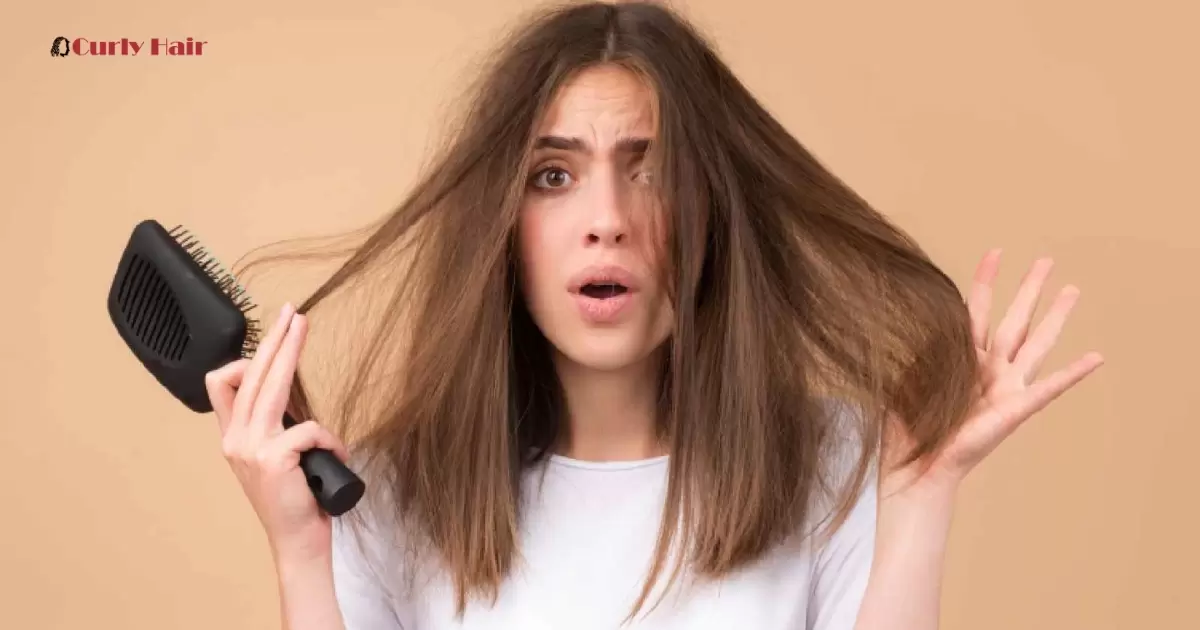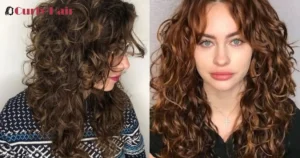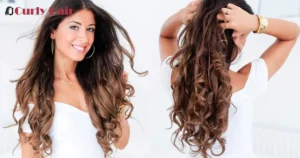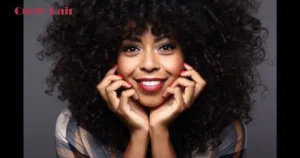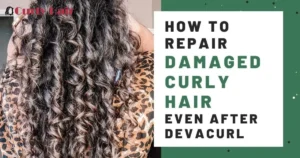Frizzy straight hair can be frustrating, especially when it refuses to stay smooth and sleek. If your hair is straight but frizzy, understanding the causes and how to manage them is essential for maintaining healthy hair. This guide will walk you through the best practices, products, and styling techniques to keep your frizzy straight hair under control.
Key Takeaways
- Identify the cause of frizz to choose appropriate solutions.
- Use a sulfate-free shampoo and moisturizing conditioner to hydrate your hair.
- Apply a leave-in conditioner to manage frizz and detangle.
- Minimize heat styling and use a heat protectant to prevent damage.
- Handle damp hair gently with a microfiber towel to reduce frizz.
Understanding Frizzy Straight Hair
Straight hair is often perceived as easier to manage than curly hair or wavy hair, but it has its challenges, especially when it comes to frizzy hair. Frizzy straight hair occurs when the hair’s cuticle layer is raised, allowing moisture to pass through and swell the hair shaft. This results in a rough texture and an uneven appearance. For those dealing with straight hair turning wavy, managing frizz becomes even more crucial to maintaining a sleek look.
Several factors contribute to this, including your hair type and environmental conditions. Humidity is a significant culprit; it can cause even the straightest hair to frizz. Additionally, overwashing, excessive heat styling, and using the wrong hair care products can all lead to frizz.
The Role of Hair Care Routine
A consistent and proper hair care routine is crucial for managing frizzy straight hair. The products you use and how you use them can make a significant difference in the appearance and texture of your hair.
Start with washing your hair using a sulfate-free shampoo. Sulfates can strip your hair of its natural oils, leading to dryness and frizz. After shampooing, apply a moisturizing conditioner to help smooth the cuticle and lock in moisture.
Consider incorporating a hair mask into your routine once a week. Hair masks are deep conditioning treatments that provide extra hydration, leaving your hair smoother and less prone to frizz. Look for masks that contain nourishing ingredients like argan oil or shea butter.
After washing, it’s essential to handle your damp hair carefully. Roughly towel-drying your hair can raise the cuticle and cause frizz. Instead, gently squeeze out excess water with a microfiber towel or a soft cotton T-shirt.
Best Products for Frizzy Straight Hair
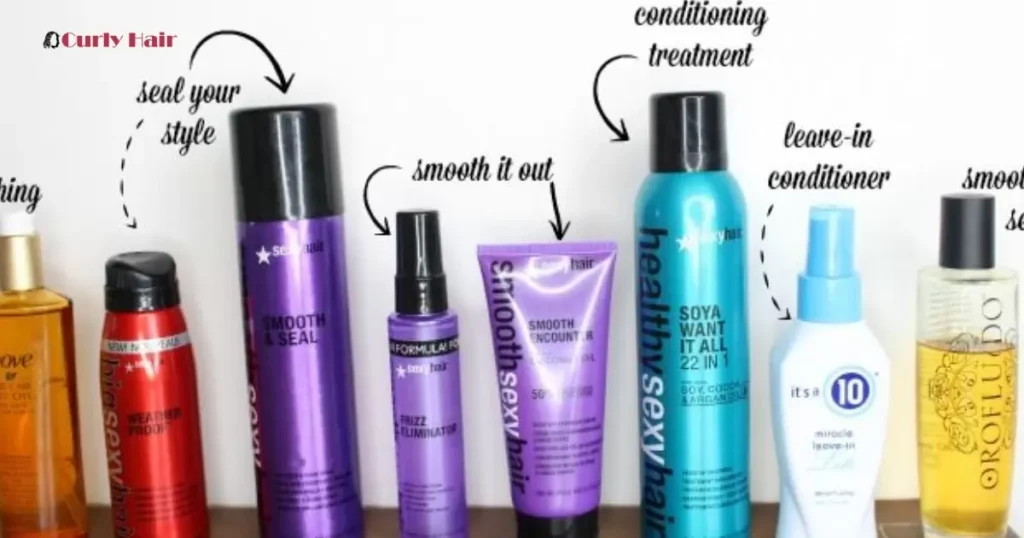
Using the right products can significantly reduce frizz and improve the overall health of your hair. Here are some must-have products for anyone struggling with frizzy straight hair:
Leave-In Conditioner: A leave-in conditioner is a lightweight product that helps to detangle and smooth your hair after washing. It adds an extra layer of moisture and protection against frizz throughout the day.
Dry Shampoo: If you find that washing your hair daily makes it more frizzy, consider using a dry shampoo. This product absorbs excess oil at the roots, allowing you to skip a wash without your hair looking greasy.
Hair Mask: As mentioned earlier, a hair mask is a deep conditioning treatment that provides intense moisture. Use it once a week to keep your hair hydrated and frizz-free.
Frizz Control Serum: A serum designed to combat frizz can be a game-changer. Apply a small amount to your damp hair before styling to smooth the cuticle and create a protective barrier against humidity.
These products work together to ensure that your hair remains frizz-free and healthy.
Effective Styling Techniques
How you style your hair plays a crucial role in controlling frizz. While heat styling tools like a flat iron and blow dryer can help achieve a sleek look, they can also cause damage if not used correctly.
When using a blow dryer, always apply a heat protectant spray to shield your hair from high temperatures. Use the dryer on a low or medium setting and direct the airflow downward to smooth the cuticle. For best results, finish with a cool blast of air to set your style and further reduce frizz.
If you prefer using a flat iron, choose one with ceramic plates, as they distribute heat evenly and minimize damage. Again, a heat protectant is essential. Run the iron over each section of your hair once or twice, over-styling can lead to breakage and frizz.
For those who want to avoid heat, air-drying damp hair is a good alternative. Apply a leave-in conditioner or frizz-control serum and let your hair dry naturally. This method is gentler on your hair and can reduce the risk of frizz.
Brushing your hair also affects frizz. Use a wide-tooth comb on damp hair to detangle without causing breakage. Avoid brushing dry hair, as this can disrupt the cuticle and create frizz.
Maintaining Hair Health
Keeping your hair healthy is key to preventing frizz. Overuse of heat-styling tools, harsh products, and environmental exposure can all contribute to frizz and damage.
One of the best ways to keep your hair healthy is to limit heat styling. If you must use tools like a blow dryer or flat iron, do so sparingly and always use a heat protectant. Consider air-drying your damp hair whenever possible to give your hair a break from heat.
Another tip for maintaining healthy, frizz-free hair is to trim your ends regularly. Split ends can travel up the hair shaft, leading to more frizz and damage. A trim every 6-8 weeks will keep your hair looking smooth and healthy.
Additionally, make sure to keep your hair hydrated. Use a hair mask weekly, and choose conditioners and leave-in conditioners that are rich in moisturizing ingredients. Hydrated hair is less likely to frizz, so keeping moisture levels up is essential.
How Do I Prevent Frizzy Straight Hair?
To prevent frizz in straight hair, start with a gentle, sulfate-free shampoo. Follow with a moisturizing conditioner to keep your hair hydrated. Avoid washing your hair daily to prevent stripping away natural oils. After washing, use a microfiber towel to gently pat your hair dry, avoiding rough towel drying.
Minimize heat styling by using a blow dryer on a low setting and always applying a heat protectant. Detangle your hair with a wide-tooth comb while it is still damp. Apply a frizz-control serum to smooth and protect your hair from humidity. Regular trims help maintain healthy ends and reduce frizz.
Tailoring Hair Care to Your Hair Type
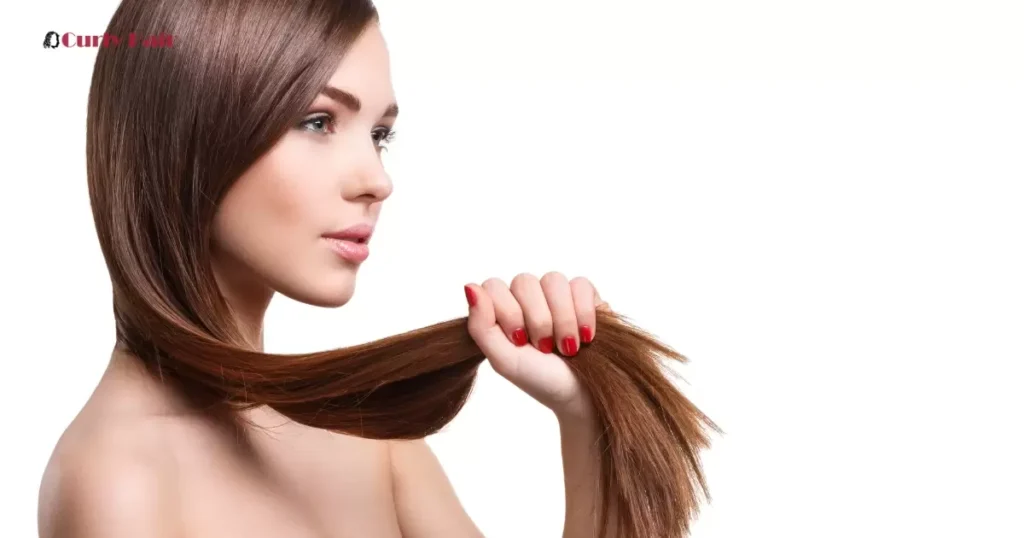
Not all hair types are created equal, and frizz can manifest differently depending on whether you have straight hair, curly hair, or wavy hair. Understanding your specific hair type and its needs can help you choose the best products and techniques.
Straight Hair: If your hair is straight but prone to frizz, focus on moisturizing and smoothing products. Avoid overloading your hair with heavy products that can weigh it down and make it look greasy.
Curly Hair: Curly hair tends to be drier, making it more susceptible to frizz. Opt for rich, hydrating products like creams and oils that help define curls while minimizing frizz.
Wavy Hair: Wavy hair falls somewhere between straight and curly, so it requires a balanced approach. Use lightweight products that enhance your waves without adding too much weight or causing frizz.
Customizing your routine to fit your hair type will help you achieve the best results and keep your hair looking its best.
Frequently Asked Question
Why is my straight hair frizzy after washing?
Your straight hair might be frizzy after washing due to moisture imbalance or damage from rough towel drying. Using a moisturizing conditioner and gently patting your hair dry can help reduce frizz.
How to get hair silky straight with a flat iron?
To get silky straight hair with a flat iron, apply a heat protectant before styling. Glide the iron slowly through small sections of your hair for a smooth finish.
How to flatten frizzy hair?
To flatten frizzy hair, use a flat iron on low heat and apply a smoothing serum. Ensure your hair is dry and use a heat protectant before styling.
Conclusion
Managing frizzy straight hair requires a combination of the right products, techniques, and a consistent hair care routine. By understanding the causes of frizz and tailoring your approach to your specific hair type, you can achieve smooth, healthy, and frizz-free hair. Remember to hydrate your hair regularly, avoid excessive heat styling, and use the appropriate tools and products to maintain your hair’s health and appearance. With these tips, you’ll be well on your way to taming frizz and enjoying sleek, manageable hair.
